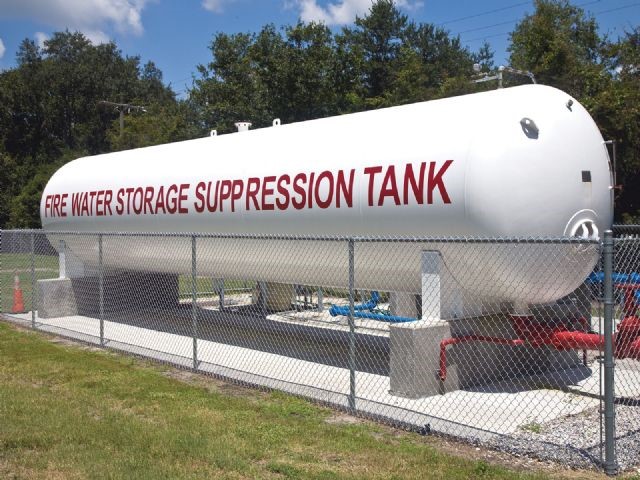How to Choose a Hydropneumatic Water Tank for Your Application
Hydropneumatic tanks are used in a variety of applications and help regulate pressure in closed-loop systems that operate above normal atmospheric or gravity flow rates, typically greater than 15psi. These tanks, often referred to as “pressure vessels,” hold water and air under pressure and have the ability to quickly pressurize a system to meet or maintain a certain demand. Hydropneumatic water tanks operate with 2/3 water and 1/3 air, can be installed aboveground or underground, and range in overall capacity from 50 gallons to 60,000 gallons.
The most common configurations for hydropneumatic water tanks are potable and non-potable water supply systems. A potable water hydropneumatic tank is typically used for a well water supply system that provides an on-demand pressurized supply of water for use between the time a well pump is shut down and the time it takes to turn back on. This also helps minimize excessive well pump cycling, extending the life of your well pump. A non-potable water hydropneumatic tank is typically used in a fire suppression application, providing an on-demand pressurized supply of water for a sprinkler system inside of a building. These types of tanks are often installed at water treatment facilities, pump stations, schools, hospitals, commercial office buildings, residential and mobile home communities, parks and many more locations.

When choosing a hydropneumatic tank suitable for your application, one of the most important design factors should be its construction. Most pressure vessels are made of steel and are required to be fabricated in accordance with ASME Section VII which is a written standard set of specifications for design, construction, and testing of hydropneumatic tanks.
Here are 10 of the most common things to consider when in need of a hydropneumatic water tank:
1. Always check local codes and regulations when planning to design or install a hydropneumatic tank system.
2. What is the usable capacity of water that is required to meet the demand of your system?
3. What is the operating pressure of your required hydropneumatic tank?
4. Will your hydropneumatic tank be installed indoors or outdoor? If your hydropneumatic tank is installed outdoors, does it need freeze protection?
5. Will your hydropneumatic tank need to be installed aboveground or underground?
6. Is a horizontal or vertical tank more suitable for your system?
7. Will your hydropneumatic tank need to be compliant with potable water requirements?
8. Will your hydropneumatic tank require an internal or external coating?
9. What are the hydropneumatic tank connections required for your system?
10. What types of pressure and level monitoring might you need for your hydropneumatic tank?
The Hydro 2 operating pressure of a hydropneumatic tank is largely considered when calculating the thickness of your tank steel. In most cases, hydropneumatic tanks with high operating pressures have thick steel walls to protect it from rupturing. Many tanks can be installed indoors or outdoor and aboveground or underground. Interior and exterior coatings are important to consider with steel tanks because they help with corrosion protection and can greatly increase the lifespan of your tank. Knowing system connection sizes and types is a critical step in choosing the right hydropneumatic water tank and will help ensure that you don’t choose a tank that cannot be properly plumbed. All of these considerations can greatly affect the cost of a hydropneumatic tank.

At Tanks Direct, we have extensive experience designing, supplying, and installing hydropneumatic tanks for commercial facilities. We provide a variety of different types of ASME tanks, fire protection, chilled water buffer tanks, bladder tanks, expansion tanks, epoxy-lined storage tanks, surge tanks, and blowdown tanks. In addition, we can provide you with the accessories that you need for your systems, such as booster pumps, water filtration equipment, tank level gauges, and much more.